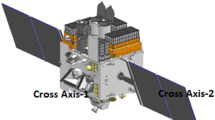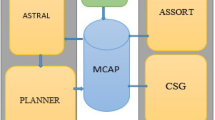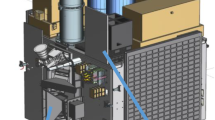Abstract
On 28th September 2015, India launched its first astronomical space observatory AstroSat, successfully. AstroSat carried five astronomy payloads, namely, (i) Cadmium Zinc Telluride Imager (CZTI), (ii) Large Area X-ray Proportional Counter (LAXPC), (iii) Soft X-ray Telescope (SXT), (iv) Ultra Violet Imaging Telescope (UVIT) and (v) Scanning Sky Monitor (SSM) and therefore, has the capability to observe celestial objects in multi-wavelength. Four of the payloads are co-aligned along the positive roll axis of the spacecraft and the remaining one is placed along the positive yaw axis direction. All the payloads are sensitive to bright objects and specifically, require avoiding bright Sun within a safe zone of their bore axes in orbit. Further, there are other operational constraints both from spacecraft side and payloads side which are to be strictly enforced during operations. Even on-orbit spacecraft manoeuvres are constrained to about two of the axes in order to avoid bright Sun within this safe zone and a special constrained manoeuvre is exercised during manoeuvres. The planning and scheduling of the payloads during the Performance Verification (PV) phase was carried out in semi-autonomous/manual mode and a complete automation is exercised for normal phase/Guaranteed Time Observation (GuTO) operations. The process is found to be labour intensive and several operational software tools, encompassing spacecraft sub-systems, on-orbit, domain and environmental constraints, were built-in and interacted with the scheduling tool for appropriate decision-making and science scheduling. The procedural details of the complex scheduling of a multi-wavelength astronomy space observatory and their working in PV phase and in normal/GuTO phases are presented in this paper.





















Similar content being viewed by others
References
Antia, H. M., Yadav J. S. et al. (2017) Calibration of the Large Area X-ray Proportional Counter (LAXPC) instrument on-board Astrosat, submitted to J. Astrophys. Astr., this issue.
Brissenden, R. J. (2001) Chandra X-ray Observatory Operations, Astronomical Data Analysis Software and Systems, X ASP Conference Series, edited by F. R. Harnden Jr., F. A. Primini & H. E. Payne, vol. 238.
Dahlem, M. (1998) XMM Remote Proposal Submission, The first XMM Workshop, ESTEC, Noordwijk, The Netherlands, 30 Sept.–2 Oct., 1998.
Dewangan, G. C. (2012) Software Design Document for ASTROSAT Proposal Processing System, IUCAA.
Fuerst, F., Harrison, F. A. et al. (2012) The Nuclear Spectroscopic Telescope Array (NuSTAR): Science Mission and Performance, Proceedings of Science, an INTEGRAL view of the high-energy sky (the first 10 years), 9th INTEGRAL workshop and celebration of the 10th anniversary of the launch, October 15–19, 2012, Paris, France.
Khoral, J. S., Natarajan, P., Pandiyan, R., Bharadwaj, K. M., Parmeswaran, K. (2012) Attitude and Orbit Control System (AOCS) Design for ASTROSAT, IAA-AAS-DyCoSS1-13-03, 1st IAA Conference on Dynamics and Control of Space Systems, March 19-21, 2012, Porto, Portugal.
Lumb, D. H. (1998) XMM Instrument Modes and Operation, The first XMM Workshop, 30 Sept.–2 Oct., ESTEC, Noordwijk, The Netherlands.
Much, R., Barr, P. et al. (2003) The INTEGRAL ground segment and its science operations centre, A & A, 411.1, L49–L52.
Muscettola, N., Pell, B., Hansson, O., Mohan, S. 1995, Automating Mission Scheduling for Space Based Observatories, Robotic Telescopes: Current Capabilities, Present Developments and Future Prospects for Automated Astronomy, edited by G. W. Henry & J. A. Eaton, Astronomical Society of the Pacific, Provo, UT.
Nagamani, T., Bharadwaj, N., Dakshayani B. P., Pandiyan, R. (2010) ASTROSAT Software Tool to Aid Celestial Source Viewing, 61st International Astronautical Congress, Prague, CZ, Paper IAC-10-A3.4.6, 2010.
Ong, J. C., Rackley, M. (2002) Autonomous Operations of the SWIFT Mission, Space Operations 2002 Conference, 10–19 October 2002, Houston, TX.
Pandiyan, R., Ramesh, A. S., Sharanappa, S. (2012) Kinematic Attitude Maneuvers with Path Constraints for ASTROSAT–An Indian Astronomy Satellite, IAA-AAS-DyCoSS1-05-07, 1st IAA Conference on Dynamics and Control of Space Systems, March 19–21, 2012, Porto, Portugal.
Palmar, I. M., Merri, M., White, N. Efficient Planning of the Scientific Observations for XMM”, Paper Id. 2b003, citeseerX reference.
Rao, A. R. et al. (2017) ASTROSAT CZT Imager Observations of GRB 151006A: Timing, Spectroscopy and Polarisation Study, submitted to J. Astrophys. Astr., this issue.
Singh, K. P. et al. (2017) The soft X-ray focusing telescope aboard ASTROSAT and its post-launch scientific capabilities, J. Astrophys. Astr. (2017), this issue.
Acknowledgements
The authors profoundly thank the Indian Space Research Organization for this excellent opportunity and freedom to work and develop a new planning and scheduling system for AstroSat. They further record their sincere appreciation and indebtedness to various payload managers who have provided their first light results pertaining to their instruments. The authors also wish to thank the reviewer for his critical comments which certainly improved the quality of the presentation.
Author information
Authors and Affiliations
Corresponding author
Rights and permissions
About this article
Cite this article
Pandiyan, R., Subbarao, S.V., Nagamani, T. et al. Planning and Scheduling of Payloads of AstroSat During Initial and Normal Phase Observations. J Astrophys Astron 38, 35 (2017). https://doi.org/10.1007/s12036-017-9446-9
Received:
Accepted:
Published:
DOI: https://doi.org/10.1007/s12036-017-9446-9




